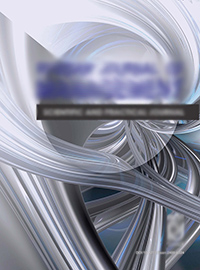Chronic migraine is polyetiological and multi-factor disease. There is no consensus about the transformation from episodic to chronic form triggers. Genetic factors, dysfunction of anti-nociceptive systems, gender, the harmful factors are discussed in this work. A high percentage prevalence among the working-age population, expressed degree of decrease in quality of life are forcing scientists to develop new drug and non-drug approaches to the treatment of this disease. Reflexology has a special place in non-drug therapies, including acupuncture, electro-acupuncture, trans-cutaneous electrical nerve stimulation and Su-Jok therapy. Sufficient experience has been accumulated in use of acupuncture in the treatment of chronic pain syndrome in general and chronic forms of primary headaches in particular. Most methods have confirmed the effectiveness that is comparable to drug therapy. The tolerability of these methods, due to their larger physiology, is superior to pharmacotherapy, and the frequency of adverse reactions is minimized. These features contribute to the growth of the worldwide interest in non-drug methods of treatment and new purposes of the researchers must be focused on comparing the effectiveness of methods among themselves, standardization of techniques of reflexology and develop more differentiated approaches to non-drug therapy.
chronic migraine, acupuncture, electro-acupuncture, Su-Jok therapy
1. Asenova L.R. Effektivnost´ akkupunktury pri kupirovanii bolevykh sindromov razlichnoy etilogii. Neyrokhirurgiya i nevrologiya Kazakhstana. 2013. №4. S. 15-17.
2. Bruk B. I. Optimizatsiya vosstanovitel´noy korrektsii funktsional´nogo sostoyaniya patsientov s khronicheskimi formami golovnoy boli na osnove rezul´tatov elektropunkturnoy diagnostiki. Avt. diss…k.m.n. Moskva 2008. 25 s.
3. Mikhaylova A.A., Tsoy V.K. Refleksoterapiya i su dzhok terapiya depressivnykh rasstroystv, as-sotsiirovannykh s patologiey gepatobiliarnoy sistemy. Vestnik novykh meditsinskikh tekhnologiy. 2007. T. 14. № 1. S. 126
4. Naprienko M.V. Iglorefleksoterapiya v kompleksnom lechenii khronicheskoy ezhednevnoy go-lovnoy boli. Avt. diss…k.m.n. Moskva, 2005. 25 s.
5. Naprienko M.V. Vosstanovitel´noe lechenie khronicheskikh form pervichnoy golovnoy boli. Avt. diss…d.m.n. Moskva, 2011. 40 s.
6. Osipova V.V., Voznesenskaya T.G. Komorbidnost´ migreni: obzor literatury i podkhody k izu-cheniyu. Zhurnal nevrologii i psikhiatrii im. S.S. Korsakova. 2007. № 3. S. 64-73.
7. Osipova V.V., Azimova Yu.E., Tabeeva G.R. Mezhdunarodnye printsipy diagnostiki golovnykh boley. Problemy diagnostiki golovnykh boley v Rossii. Sovremennye podkhody k diagnostike i leche-niyu migreni. Vestnik semeynoy meditsiny. 2010. №2. S. 19-24.
8. Popova L.A. Metod Su-Dzhok akupunktury v praktike lecheniya ortopedicheskikh bol´nykh. Ge-niy ortopedii. 2005. №4. S. 125-128.
9. Facco E., Liguori A. Acupuncture versus valproic acid in the prophylaxis of migraine without aura: a prospective controlled study.
10. Headache Classification Committee of the International Headache Society (IHS) The International Classification of Headache Disorders, 3rd edition (beta version). Cephalalgia. 2013. 33(9). R. 629-808.
11. Hoskin K.L., Zagami A., Goadsby P.J. Stimulation of the middle meningeal artery leads to Fos ex-pression in the trigeminocervical nucleus: a comparative study of monkey and cat. J Anat. 1999. V. 194. P. 579-588.
12. Jiang Yin, Wang Hong, Liu Zhenyu. Manipulation of and Sustained Effects on the Human Brain In-duced by Different Modalities of Acupuncture: An fMRI Study. PLOS ONE. 2013. V. 8.
13. Knight YE, Goadsby PJ. The periaqueductal gray matter modulates trigeminovascular input: A role in migraine. Neuroscience. 2001. V. 106. P. 793-800.
14. Kruit M.C., Launer L.J., Overbosch J., van Buchem M.A., Ferrari M.D. Iron accumulation in deep brain nuclei in migraine: A population-based magnetic resonance imaging study. Cephalalgia. 2008. V. 29. P. 351-359.
15. MacPherson H., Maschino A. C., Lewith G. Characteristics of Acupuncture Treatment Associated with Outcome: An Individual Patient Meta-Analysis of 17,922 Patients with Chronic Pain in Randomised Con-trolled Trials. PLOS ONE. 2013. V. 8.
16. MacPherson H., Vertosick E., Lewith G. Influence of Control Group on Effect Size in Trials of Acu-puncture for Chronic Pain: A Secondary Analysis of an Individual Patient Data Meta-Analysis. PLOS ONE. 2014. V. 9.
17. Mathew N.T. Chronic daily headache. Pain - 1996: An updated review. IASP - Press. 1996. P. 143-153.
18. Plank S., MD, LAc; Goodard J. The Effectiveness of Acupuncture for Chronic Daily Headache: An Outcomes Study. MILITARY MEDICINE. 2009. 174(12). P. 1276.
19. Raskin NH, Hosobuchi Y, Lamb S. Headache may arise from perturbation of brain. Headache. 1987. V. 27. P. 416-420.
20. Streng A., Linde K. Effectiveness and tolerability of acupuncture compared with metoprolol in mi-graine prophylaxis. Headache. 2006. 46(10). P. 1492-502.
21. Sun Y., Gan TJ. Anesth Analg, 2008.
22. Ulett G.A., Han S., Han J.S. Electroacupuncture: mechanisms and clinical application. Biol Psychia-try. 1998. 44. P. 129-138.
23. Wan-Sheng Wang, Wen-Zhan Tu, Rui-Dong Cheng, «Journal of Neuroscience Research», 2014.
24. Yang J., Zeng F. A PET-CT study on the specificity of acupoints through acupuncture treatment in migraine patients. Complementary and Alternative Medicine, 2012.
25. Zhao L., Chen J., Liu C.Z., Li Y., Cai D.J., Tang Y., Yang J., Liang F.R.: A review of acupoint speci-ficity research in china: status quo and prospects. Evid Based Complement Altern Med 2012, 2012.





